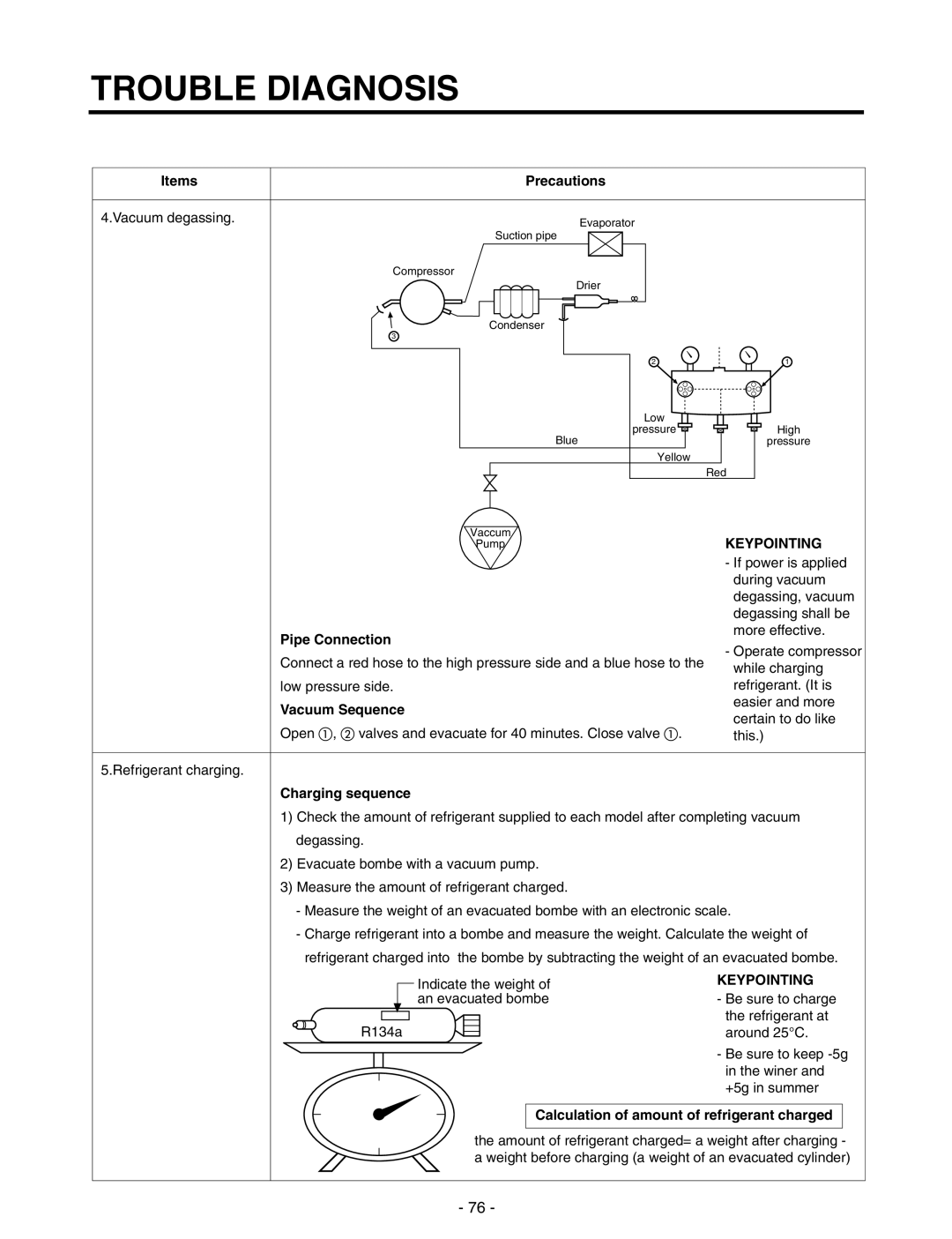
TROUBLE DIAGNOSIS
Items | Precautions |
| |
4.Vacuum degassing. | Evaporator |
| |
|
| ||
| Suction pipe |
| |
| Compressor |
| |
| Drier |
| |
| Condenser |
| |
| 3 |
| |
| 2 | 1 | |
| Low |
| |
| pressure | High | |
| Blue | pressure | |
| Yellow |
| |
|
| Red | |
| Vaccum | KEYPOINTING | |
| Pump | ||
|
| - If power is applied | |
|
| during vacuum | |
|
| degassing, vacuum | |
|
| degassing shall be | |
Pipe Connection | more effective. | ||
- Operate compressor | |||
Connect a red hose to the high pressure side and a blue hose to the | |||
while charging | |||
|
| ||
low pressure side. | refrigerant. (It is | ||
Vacuum Sequence | easier and more | ||
certain to do like | |||
Open , | valves and evacuate for 40 minutes. Close valve . | ||
this.) | |||
5.Refrigerant charging.
Charging sequence
1)Check the amount of refrigerant supplied to each model after completing vacuum degassing.
2)Evacuate bombe with a vacuum pump.
3)Measure the amount of refrigerant charged.
-Measure the weight of an evacuated bombe with an electronic scale.
-Charge refrigerant into a bombe and measure the weight. Calculate the weight of refrigerant charged into the bombe by subtracting the weight of an evacuated bombe.
|
|
|
|
|
| Indicate the weight of | KEYPOINTING | ||
|
|
|
|
|
| ||||
|
|
|
|
|
| an evacuated bombe | - Be sure to charge | ||
|
|
|
|
|
|
|
|
| the refrigerant at |
R134a |
|
| around 25°C. | ||||||
|
| ||||||||
- Be sure to keep
Calculation of amount of refrigerant charged
the amount of refrigerant charged= a weight after charging - a weight before charging (a weight of an evacuated cylinder)
- 76 -
